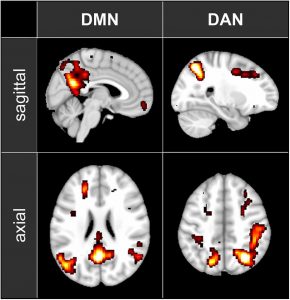Lower Opioid Cravings are Associated with Lower Depression, Higher Self-Regulation, and Higher Mindfulness
By John M. de Castro, Ph.D.
“mindfulness-based interventions could help people dependent on opioids increase their self-awareness and self-control over cravings and be less reactive to emotional and physical pain.” – Science Daily
Substance abuse and addiction is a terrible problem, especially opioid pain relievers. Opioid addiction has become epidemic and is rapidly increasing affecting more than 2 million Americans and an estimated 15 million people worldwide. In the U.S more than 20,000 deaths yearly were attributed to an overdose of prescription opioids, and another 13,000 deaths from heroin overdose. These statistics, although startling are only the tip of the iceberg. Drug use is associated with suicide, homicide, motor-vehicle injury, HIV infection, pneumonia, violence, mental illness, and hepatitis. It can render the individual ineffective at work, it tears apart families, it makes the individual dangerous both driving and not.
An effective treatment for addiction has been elusive. Most programs and therapies to treat addictions have poor success rates. Recent research is indicating that mindfulness has been found to be effective in treating addictions. One way that mindfulness may produce these benefits is by reducing cravings for opioids. It may also do so by affecting the ability of the addict to regulate their emotions. Indeed, mindfulness has been shown to improve emotional regulation.
In today’s Research News article “Autonomic and affective mediators of the relationship between mindfulness and opioid craving among chronic pain patients. Experimental and clinical psychopharmacology.” (See summary below or view the full text of the study at: https://www.ncbi.nlm.nih.gov/pmc/articles/PMC6355352/), Baker and Garland recruited non-cancer chronic pain patients who were taking opioid analgesics and had them complete self-report measures of mindfulness, opioid craving, and depression. They also measured their heart rates with an electrocardiogram (ECG) while looking at either neutral pictures or “opioid-related image (e.g., pills, pill bottles).” These data were analyzed to determine heart rate variability as a measure of the activity of the peripheral autonomic nervous system.
They found that the higher the levels of mindfulness the higher the levels of heart rate variability while looking at opioid-related pictures. And the lower the levels of depression and opioid cravings. Also, the higher the levels of depression, the higher the levels of opioid cravings. Employing a multivariate path analysis, they found that mindfulness was not associated with lower opioid cravings directly, but indirectly via mindfulness’ associations with heart rate variability and depression. That is, they found that mindfulness was associated with higher heart rate variability which was in turn associated with lower opioid cravings and also with lower depression which was in turn associated with lower opioid cravings.
Heart rate variability is thought to measure the nervous systems adjustments to the physiology involved in regulating its physical responses to stimuli. In other words, it’s a measure of self-regulation. The present results suggest that mindfulness is associated with greater self-regulation and this is associated with lower cravings for opioids. The results also suggest that depression is associated with higher cravings for opioids and that mindfulness interrupts this by being associated with lower depression.
These results are correlative and as such causation cannot be determined. Nevertheless, prior research has demonstrated causal links between mindfulness and lower cravings and depression. So, the present results likely result from causal connections. The findings also suggest the mechanism whereby mindfulness may lower cravings by contributing to the ability to regulate physical responses to opioid-related stimuli and by reducing depression. These results provide more support for the use of mindfulness training as a treatment for addictions.
So, lower opioid cravings are associated with lower depression, higher self-regulation, and higher mindfulness.
“people suffering from opioid addiction and chronic pain may have fewer cravings and less pain when adding mindfulness to the traditional methadone treatment.” – Grace Bullock
CMCS – Center for Mindfulness and Contemplative Studies
This and other Contemplative Studies posts are also available on Google+ https://plus.google.com/106784388191201299496/posts and on Twitter @MindfulResearch
Study Summary
Baker, A. K., & Garland, E. L. (2019). Autonomic and affective mediators of the relationship between mindfulness and opioid craving among chronic pain patients. Experimental and clinical psychopharmacology, 27(1), 55–63. https://doi.org/10.1037/pha0000225
Abstract
Prescription opioid misuse among chronic pain patients is associated with self-regulatory deficits, affective distress and opioid cue reactivity. Dispositional mindfulness has been associated with enhanced self-regulation, lower distress, and adaptive autonomic responses following drug cue exposure. We hypothesized that dispositional mindfulness might serve as a protective factor among opioid-treated chronic pain patients. We examined heart rate variability (HRV) during exposure to opioid cues and depressed mood as mediators of the association between dispositional mindfulness and opioid craving. Data were obtained from a sample of chronic pain patients (N=115) receiving long-term opioid pharmacotherapy. Participants self-reported opioid craving and depression, and HRV was measured during an opioid-cue dot probe task. Dispositional mindfulness was significantly positively correlated with HRV, and HRV was significantly inversely associated with opioid craving. Dispositional mindfulness was significantly negatively correlated with depression, and depression was significantly positively correlated with opioid craving. Path analysis revealed significant indirect effects of dispositional mindfulness on craving through both HRV and depression. Dispositional mindfulness may buffer against opioid craving among chronic pain patients prescribed opioids; this buffering effect may be a function of improved autonomic and affective responses.
https://www.ncbi.nlm.nih.gov/pmc/articles/PMC6355352/



